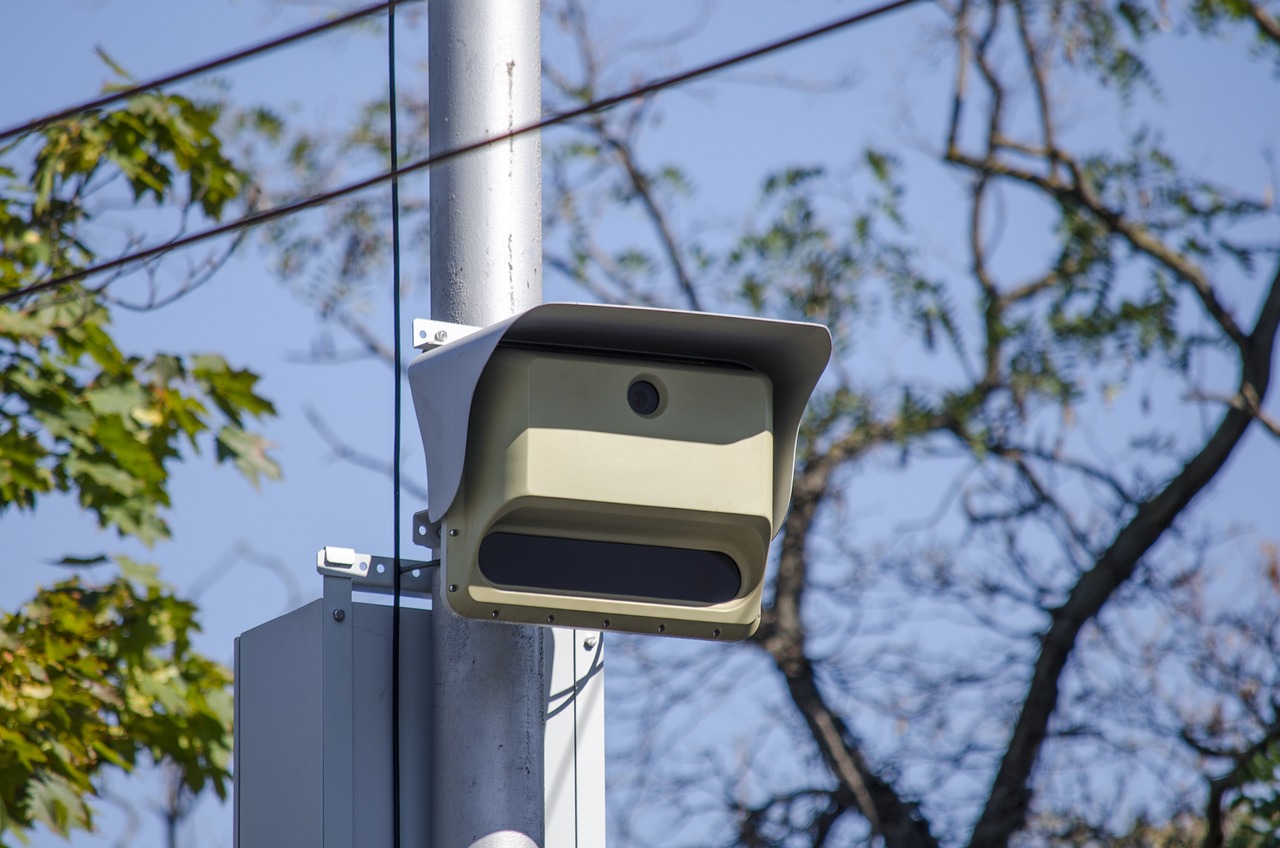Human Behavior: A Safety Game-changer!
In today's fast-paced world, the importance of safety cannot be overstated. Whether it's in the workplace, during public events, or in our daily lives, understanding human behavior can be the key to transforming safety measures into something more effective and proactive. Have you ever stopped to think about how our actions and decisions influence the safety of ourselves and those around us? It's a fascinating concept that goes beyond just following rules; it's about understanding the psychology behind those rules and how we can leverage that knowledge to create a safer environment.
Imagine a workplace where every employee is not just aware of the safety protocols, but actively engaged in promoting safety. This scenario isn't just a dream; it's achievable through a deeper understanding of human behavior. By focusing on the motivations, fears, and habits of individuals, organizations can tailor their safety programs to resonate more with their employees. Instead of merely enforcing rules, leaders can foster a culture where safety is seen not as an obligation but as a shared value.
So, how does this work in practice? Well, it starts with recognizing that human behavior is often influenced by psychological factors such as perception, attitude, and social dynamics. For instance, if employees perceive safety measures as cumbersome or unnecessary, they are less likely to adhere to them. On the other hand, when safety is integrated into the workplace culture—where everyone feels responsible and empowered to speak up about safety concerns—accidents and injuries can significantly decrease.
To illustrate this point, consider the following key aspects that highlight the relationship between human behavior and safety:
- Awareness: Understanding the risks associated with tasks can lead to better decision-making.
- Engagement: Involving employees in safety discussions fosters a sense of ownership.
- Feedback: Providing constructive feedback helps reinforce safe behaviors.
In conclusion, when we harness the power of human behavior, we can create a safety culture that not only reduces incidents but also enhances overall well-being. As we delve deeper into this topic, we'll explore various strategies and programs that can make a significant difference in safety practices across different sectors. Stay tuned as we uncover the layers of this fascinating connection!

The Psychology of Safety
Understanding the psychological factors that influence human behavior is essential for enhancing safety measures in various settings. It’s fascinating how our minds work when it comes to making decisions about safety. For instance, have you ever wondered why some people take risks while others are overly cautious? This disparity can often be attributed to underlying psychological principles that govern our actions. By delving into these principles, we can develop more effective interventions and training programs that not only reduce accidents but also cultivate a robust safety culture.
One of the key elements in the psychology of safety is the concept of perception. How individuals perceive risks can vary dramatically based on their experiences, knowledge, and even their emotional state. For instance, someone who has experienced a workplace accident may develop a heightened sense of caution, while another who has never faced such a situation might underestimate the risks involved. This variance in perception can lead to different safety behaviors, making it crucial for organizations to understand these psychological dynamics.
Moreover, the social environment plays a significant role in shaping safety behaviors. People are influenced by those around them, and this can either encourage safe practices or promote risky behavior. A workplace where safety is prioritized and openly discussed fosters a culture where employees feel responsible for their own safety and that of their colleagues. In contrast, environments that downplay safety concerns can lead to complacency and increased risk-taking.
To address these psychological factors effectively, organizations can implement several strategies:
- Training Programs: Tailored training that incorporates psychological insights can help employees recognize their biases and improve their decision-making regarding safety.
- Peer Influence: Encouraging employees to share their safety experiences can create a supportive environment where safe behaviors are reinforced.
- Positive Reinforcement: Acknowledging and rewarding safe practices can motivate individuals to maintain high safety standards.
In addition to these strategies, it’s vital to foster an environment of open communication. When employees feel comfortable discussing safety concerns, they are more likely to report hazards and engage in proactive safety behaviors. This not only helps in identifying potential risks before they escalate but also reinforces the belief that safety is a shared responsibility.
In summary, the psychology of safety is a complex interplay of perception, social influence, and communication. By understanding and addressing these psychological factors, organizations can significantly enhance their safety measures, leading to a more secure and productive environment for everyone involved. After all, when it comes to safety, it’s not just about rules and regulations; it’s about understanding the human element that drives behavior.
- What is the importance of understanding the psychology of safety?
Understanding the psychology of safety helps organizations tailor their safety programs to address the specific behaviors and perceptions of employees, ultimately leading to a safer work environment. - How can organizations improve their safety culture?
Organizations can improve their safety culture by promoting open communication, implementing tailored training programs, and recognizing safe behaviors through positive reinforcement. - What role does peer influence play in safety?
Peer influence can significantly impact safety behaviors; when employees observe their colleagues prioritizing safety, they are more likely to adopt similar attitudes and practices.

Behavioral Safety Programs
When it comes to creating a safer work environment, are like the secret sauce that can make all the difference. These programs focus on the idea that safety is not just about having the right equipment or protocols in place; it’s about understanding and modifying the behaviors of individuals within the workplace. Imagine a workplace where everyone is not only aware of safety protocols but actively engages in practices that promote a culture of safety. That’s the goal of behavioral safety programs!
The essence of these programs lies in the observation and modification of employee behaviors. Instead of merely reacting to incidents after they happen, behavioral safety programs emphasize a proactive approach. This means identifying potential risks before they lead to accidents. By fostering an environment where safety is prioritized, employees are encouraged to take ownership of their actions, creating a ripple effect that enhances overall workplace safety.
Successful implementation of behavioral safety programs includes several key components that work in harmony:
- Observation: Safety professionals observe employee behaviors in real-time to identify at-risk practices.
- Feedback: Providing constructive feedback helps reinforce safe behaviors and correct unsafe practices.
- Reinforcement: Recognizing and rewarding safe behaviors encourages a culture of accountability and vigilance.
One of the most effective aspects of these programs is the use of observation techniques. Safety professionals can utilize various methods, such as direct observation, video analysis, and peer observations, to identify behaviors that could lead to accidents. This proactive approach not only helps in spotting potential hazards but also fosters an environment where employees feel supported in making safe choices.
But observation alone isn’t enough; it’s crucial to have feedback mechanisms in place. Effective feedback is like a compass, guiding employees in the right direction. When they receive timely and constructive feedback, they can adjust their behaviors accordingly. This continuous loop of observation and feedback creates a cycle of improvement that can significantly reduce the likelihood of accidents.
Moreover, training and education are vital components of behavioral safety programs. By incorporating behavioral insights into training sessions, organizations can enhance employees' understanding of safety protocols. Imagine a training program that not only tells employees what to do but also explains why their behavior matters in maintaining a safe environment. This empowers employees to make informed decisions and prioritize safety in their daily tasks, turning them into active participants in the safety culture.
In conclusion, behavioral safety programs are more than just a set of rules; they are a comprehensive approach to fostering a culture of safety. By focusing on observation, feedback, and education, organizations can create an environment where safety is not just an obligation but a shared value. When employees feel empowered and accountable for their actions, the workplace transforms into a safer, more productive space for everyone.

Key Components of Behavioral Safety
When it comes to creating a safer workplace, understanding the is absolutely essential. This approach is not just about having rules on paper; it's about embedding safety into the very fabric of the workplace culture. Picture this: a workplace where employees are not only aware of safety protocols but are actively engaged in promoting and practicing them. This is the kind of environment that effective behavioral safety programs strive to achieve.
At the heart of any successful behavioral safety initiative are three main components: observation, feedback, and reinforcement. These elements work together to create a culture where safety is prioritized and where employees feel a sense of accountability for their actions. Let’s break these down a bit further.
Observation is the first step in this process. Safety professionals utilize various techniques to monitor employee behaviors in real-time. This isn’t about playing the role of a 'safety cop'; rather, it’s about identifying at-risk behaviors before they lead to accidents. Imagine a coach watching their players during practice—by observing, they can give immediate advice and corrections, ensuring that everyone is performing at their best. Similarly, observation in a workplace setting allows for timely interventions that promote safer practices.
Next comes feedback. This is a critical component that ensures employees understand the significance of their actions. Regular feedback helps reinforce safe behaviors and correct unsafe practices. Think of it like a conversation between friends—if one friend is doing something that could lead to trouble, the other steps in to say, “Hey, maybe try it this way instead!” In a workplace, constructive feedback can empower employees, making them feel valued and engaged in the safety process.
Finally, there’s reinforcement. This is where the magic happens! When safe behaviors are recognized and rewarded, it encourages employees to continue those practices. Positive reinforcement can take many forms, from verbal praise to tangible rewards. It’s akin to a child receiving a gold star for good behavior in school—this kind of recognition motivates them to keep up the good work. In a workplace, acknowledging safe practices not only boosts morale but also solidifies a culture of safety.
In summary, the key components of behavioral safety—observation, feedback, and reinforcement—are crucial for fostering a safe work environment. By implementing these components effectively, organizations can create a culture where safety is not just a priority but a shared value among all employees. This proactive approach not only reduces accidents but also enhances overall workplace morale, making it a win-win situation for everyone involved.
- What is behavioral safety? Behavioral safety is an approach that focuses on identifying and changing at-risk behaviors within the workplace to enhance overall safety.
- How can observation improve safety? By observing employee behaviors, safety professionals can identify potential risks and intervene before accidents occur.
- Why is feedback important in safety programs? Feedback helps reinforce safe practices and correct unsafe behaviors, ensuring employees understand their role in maintaining safety.
- What role does reinforcement play in behavioral safety? Reinforcement encourages continued safe behaviors by recognizing and rewarding employees for their commitment to safety.

Observation Techniques
Observation techniques are pivotal in the realm of safety management, acting as the eyes and ears of organizations striving to cultivate a safer work environment. Imagine being able to spot a potential hazard before it escalates into a serious incident—this is precisely what effective observation techniques aim to achieve. By systematically observing employee behaviors and environmental conditions, safety professionals can identify at-risk behaviors and intervene proactively. This not only prevents accidents but also fosters a culture of safety awareness among employees.
One of the most effective observation techniques is the use of structured observation checklists. These checklists serve as a guide for safety professionals, ensuring that they monitor critical safety behaviors consistently. For instance, a checklist might include items such as:
- Compliance with personal protective equipment (PPE) requirements
- Proper use of machinery and tools
- Adherence to safety protocols during high-risk tasks
- Awareness of surroundings and potential hazards
By utilizing these checklists, observers can systematically assess behaviors and pinpoint areas that require immediate attention or improvement. Furthermore, the act of documenting observations not only provides a record for future analysis but also reinforces the importance of safety practices among employees. When workers see that their behaviors are being monitored, they are more likely to remain vigilant and adhere to safety protocols.
Another powerful observation technique is the use of peer observations. This approach encourages employees to observe each other’s behaviors in a supportive manner, fostering a sense of accountability and teamwork. When employees take an active role in observing their peers, it can lead to a more engaged workforce, where safety becomes a shared responsibility. Peer observations can be structured through regular safety meetings or informal check-ins, allowing for open discussions about safety practices and potential improvements.
Moreover, technology plays an increasingly significant role in observation techniques. Tools such as video surveillance and wearable devices can provide real-time data on employee behaviors and environmental conditions. For example, video analytics can help identify patterns of unsafe behavior over time, while wearable devices can monitor vital signs and alert workers to hazardous conditions. These technological advancements not only enhance the ability to observe but also empower organizations to respond swiftly to potential risks.
In summary, effective observation techniques are crucial for enhancing workplace safety. By employing structured checklists, fostering peer observations, and leveraging technology, organizations can create a proactive safety culture where potential hazards are identified and addressed before they lead to incidents. The ultimate goal is to transform safety from a reactive obligation into a proactive mindset that permeates every level of the organization.
- What are observation techniques in safety management?
Observation techniques involve systematically monitoring employee behaviors and environmental conditions to identify potential hazards and promote safety. - How can peer observations enhance workplace safety?
Peer observations foster a sense of accountability and teamwork, encouraging employees to support each other in adhering to safety protocols. - What role does technology play in observation techniques?
Technology, such as video surveillance and wearable devices, enhances the ability to monitor behaviors and conditions in real-time, allowing for quicker responses to potential risks.

Feedback Mechanisms
Feedback mechanisms are essential in creating a robust safety culture within any organization. They serve as the bridge between management and employees, ensuring that everyone is on the same page when it comes to safety practices. Imagine a well-oiled machine; each part needs to communicate effectively with the others to function smoothly. In the context of safety, feedback works similarly, facilitating a continuous loop of communication that enhances awareness and accountability.
One of the most effective forms of feedback is direct, real-time communication. This can occur during safety meetings, where employees are encouraged to share their experiences and observations. Think of it as a brainstorming session, but instead of ideas, the focus is on safety practices and potential hazards. By fostering an environment where employees feel comfortable discussing safety concerns, organizations can identify issues before they escalate into accidents.
Moreover, feedback mechanisms should also include formalized processes, such as safety audits and performance reviews. These processes not only provide structured feedback but also highlight areas for improvement. For instance, if an audit reveals that certain safety protocols are consistently overlooked, management can address the issue immediately, implementing additional training or resources to rectify the situation.
In addition to these methods, utilizing technology can significantly enhance feedback mechanisms. For example, many organizations now employ mobile apps that allow employees to report unsafe conditions instantly. This immediate feedback loop not only empowers employees but also ensures that management is informed and can act quickly to mitigate risks. The integration of technology in feedback mechanisms can transform the safety landscape, making it more dynamic and responsive.
To illustrate the effectiveness of feedback mechanisms, consider the following table that outlines key feedback strategies and their benefits:
| Feedback Strategy | Benefits |
|---|---|
| Real-time Communication | Encourages immediate reporting of hazards and promotes a culture of openness. |
| Safety Audits | Identifies gaps in safety practices and provides structured improvement plans. |
| Mobile Reporting Apps | Facilitates quick reporting and enhances employee engagement in safety protocols. |
In conclusion, effective feedback mechanisms are not just a box to tick; they are vital components that can transform an organization's safety culture. By prioritizing feedback, companies can create an environment where safety is a shared responsibility, ultimately leading to a more secure workplace for everyone involved.
- What are feedback mechanisms in safety? Feedback mechanisms are processes that allow for communication and reporting of safety practices and concerns within an organization.
- Why are feedback mechanisms important? They promote a culture of safety, encourage employee engagement, and help identify potential hazards before they lead to accidents.
- How can technology improve feedback mechanisms? Technology, such as mobile apps, can facilitate real-time reporting and enhance communication between employees and management.

Training and Education
Training and education are the cornerstones of any effective safety program. When we think about safety in the workplace, it’s easy to focus solely on the rules and regulations. However, the real magic happens when we delve deeper into the human aspect of safety. Understanding how people learn, adapt, and respond to safety protocols can make a world of difference. Imagine a workplace where every employee not only knows the safety rules but also embraces them as part of their daily routine. This is where training and education come into play.
Effective training programs should be designed to not only inform but also to engage employees. It’s not just about lecturing them on safety protocols; it’s about creating an interactive experience that resonates with them. For instance, using real-life scenarios can help employees visualize the consequences of unsafe behaviors. This approach can be far more impactful than a simple PowerPoint presentation. When employees can see the risks and understand the potential outcomes, they are more likely to internalize the importance of safety protocols.
Moreover, training should be continuous, not just a one-time event. Safety is an evolving field, and as new technologies and methods emerge, so too should the training programs. Regular refresher courses can keep safety at the forefront of employees' minds and reinforce the behaviors that lead to a safer workplace. To illustrate this, consider the following table that outlines the key components of an effective training program:
| Component | Description |
|---|---|
| Interactive Learning | Engaging employees through hands-on activities and discussions. |
| Real-Life Scenarios | Utilizing case studies to highlight the consequences of unsafe behaviors. |
| Continuous Education | Offering regular training sessions to keep safety knowledge current. |
| Assessment and Feedback | Evaluating employee understanding and providing constructive feedback. |
Additionally, incorporating technology into training can enhance the learning experience. Virtual reality (VR) simulations, for example, can immerse employees in realistic scenarios that require them to make quick decisions. This not only improves their problem-solving skills but also prepares them for real-life situations where every second counts. By leveraging innovative training methods, organizations can foster a culture of safety that resonates with employees on a personal level.
Ultimately, empowering employees through training and education is about instilling a sense of responsibility. When employees feel knowledgeable and confident in their ability to uphold safety standards, they become advocates for safety within their teams. This creates a ripple effect, where safe behaviors are modeled and reinforced throughout the organization. So, let’s ask ourselves: Are we doing enough to educate our workforce? Are we engaging them in a way that makes safety a priority? The answers to these questions can lead to significant changes in our safety culture.
- What is the importance of training in workplace safety? Training is crucial as it equips employees with the knowledge and skills to recognize and mitigate risks, fostering a safer work environment.
- How often should safety training be conducted? Safety training should be ongoing, with regular refresher courses to keep employees informed about the latest safety protocols and practices.
- Can technology enhance safety training? Absolutely! Technologies like virtual reality and online training modules can create engaging and effective learning experiences.
- What role does feedback play in safety training? Feedback is essential as it helps reinforce safe behaviors and correct unsafe practices, ensuring continuous improvement in safety culture.

The Role of Leadership in Safety Culture
Leadership is like the captain of a ship, steering the crew towards safe shores. When it comes to safety culture within an organization, the role of leadership cannot be overstated. Leaders set the tone, establish priorities, and model behaviors that will resonate throughout the entire organization. If leaders are committed to safety, their teams are likely to follow suit. It's not just about enforcing rules; it's about creating an environment where safety is deeply ingrained in the organizational fabric.
One of the most effective ways for leaders to foster a strong safety culture is through visible commitment. This means not only endorsing safety protocols but actively participating in safety initiatives themselves. For example, when a manager takes the time to conduct safety audits or participate in training sessions, it sends a powerful message: safety is important. Employees are more likely to adopt similar attitudes when they see their leaders prioritizing safety over other business goals.
Moreover, effective communication strategies play a crucial role in enhancing safety culture. Leaders must ensure that safety messages are not only clear but also consistent across all levels of the organization. This involves regular updates, open forums for discussion, and an approachable demeanor that encourages employees to voice their concerns. When employees feel comfortable discussing safety issues, it leads to a more proactive approach to identifying and mitigating risks.
In addition, leaders should consider implementing a feedback loop that encourages continuous improvement. This can be achieved through regular safety meetings where team members can share experiences and suggest improvements. By fostering an environment where feedback is valued, leaders can empower employees to take ownership of their safety practices. It's about building a community where everyone feels responsible for maintaining a safe workplace.
To illustrate the impact of leadership on safety culture, consider the following table that outlines the key attributes of effective safety leadership:
| Attribute | Description |
|---|---|
| Visibility | Leaders actively participate in safety initiatives, demonstrating their commitment. |
| Communication | Clear, consistent messaging about safety policies and practices. |
| Feedback | Encouraging open dialogue about safety issues and suggestions for improvement. |
| Empowerment | Giving employees the tools and authority to prioritize safety in their roles. |
In summary, leadership plays a pivotal role in shaping the safety culture of an organization. By demonstrating commitment, fostering open communication, and encouraging feedback, leaders can create an environment where safety is not just a priority but a core value. This proactive approach not only enhances safety outcomes but also contributes to overall employee morale and productivity. After all, a safe workplace is a happy workplace!
- Why is leadership important in safety culture? Leadership sets the tone for safety practices and influences employee attitudes towards safety.
- How can leaders demonstrate their commitment to safety? By actively participating in safety initiatives and promoting open communication about safety concerns.
- What role does communication play in safety culture? Clear and consistent communication ensures that safety messages are understood and encourages employee engagement.
- How can feedback improve safety practices? Feedback allows for continuous improvement and empowers employees to take ownership of safety in their roles.

Leadership Commitment
In any organization, to safety is not just a buzzword; it’s the very backbone of a thriving safety culture. When leaders visibly prioritize safety, it sends a powerful message that resonates throughout the entire workforce. Imagine a ship at sea, navigating treacherous waters. If the captain is calm and focused on the safety of the crew, everyone else feels reassured and follows suit. Similarly, when leaders demonstrate their dedication to safety, employees are more likely to adopt a positive attitude towards safety practices and protocols.
Leaders can showcase their commitment in various ways. For instance, regular safety meetings, open-door policies for safety concerns, and leading by example are just a few methods that can create a ripple effect within the organization. When employees see their leaders donning safety gear, participating in safety drills, or engaging in safety discussions, they are more inclined to mirror those behaviors. This creates a culture where safety is not merely an obligation but a shared value.
Furthermore, leaders should actively participate in safety training sessions. By doing so, they not only gain a deeper understanding of safety protocols but also demonstrate their commitment to continuous improvement. This involvement can foster a sense of unity and shared responsibility among employees, as they see their leaders investing time and effort into their safety. It’s like a coach training alongside the team, reinforcing the idea that everyone is in this together.
To effectively communicate their commitment, leaders can employ various strategies, including:
- Regular Updates: Keeping everyone informed about safety initiatives and progress.
- Recognition Programs: Celebrating employees who exemplify safe behaviors can motivate others to follow suit.
- Feedback Loops: Encouraging employees to share their thoughts on safety practices can create a more inclusive environment.
Ultimately, the commitment of leadership to safety is a vital component of fostering a proactive safety culture. It’s about creating an environment where safety is valued, where employees feel empowered to speak up about concerns, and where everyone understands that safety is a shared responsibility. Without this commitment, safety initiatives may fall flat, akin to a house built on sand—lacking a solid foundation to withstand the storms of workplace hazards.
Q: Why is leadership commitment important for safety culture?
A: Leadership commitment is crucial because it sets the tone for the entire organization. When leaders prioritize safety, it encourages employees to adopt similar attitudes, creating a culture where safety is valued and prioritized.
Q: How can leaders demonstrate their commitment to safety?
A: Leaders can demonstrate their commitment by participating in safety training, holding regular safety meetings, recognizing safe behaviors, and maintaining open communication about safety concerns.
Q: What impact does a strong safety culture have on employees?
A: A strong safety culture leads to increased employee morale, reduced accidents, and improved overall productivity. Employees feel valued and are more likely to engage in safe practices when they see their leaders prioritizing safety.

Communication Strategies
Effective communication is the backbone of any successful safety culture. It’s not just about sending out memos or holding meetings; it’s about creating an environment where safety is openly discussed and prioritized. Imagine walking into a workplace where everyone feels comfortable voicing their concerns about safety hazards. This is the kind of culture that can be fostered through strategic communication. By utilizing clear, consistent, and engaging messaging, organizations can ensure that safety remains at the forefront of employees' minds.
One of the most powerful tools in communication is storytelling. Sharing real-life incidents, both positive and negative, can create a profound impact on employees. When they hear about a colleague who avoided an accident due to a specific safety protocol, it resonates on a personal level. Similarly, stories of accidents can serve as stark reminders of what’s at stake. This emotional connection can motivate employees to pay closer attention to safety practices. Additionally, incorporating visual aids such as infographics and videos can enhance understanding and retention of safety information.
Moreover, feedback loops are crucial in communication strategies. Organizations should not only disseminate information but also actively seek input from employees. This can be achieved through regular safety meetings, suggestion boxes, or anonymous surveys. When employees feel that their voices are heard, they are more likely to engage in safety practices and report unsafe conditions. For instance, a simple question like, “What safety issues have you encountered this week?” can open up a floodgate of valuable insights.
To further enhance communication, it’s essential to tailor messages to different audiences within the organization. Not everyone processes information in the same way. For example, new employees may require more basic training and information, while seasoned workers might benefit from advanced safety techniques. By segmenting the audience and customizing the messaging, organizations can ensure that everyone receives the information they need in a way that resonates with them.
In addition, technology plays a significant role in modern communication strategies. Utilizing platforms such as internal social networks, mobile apps, and instant messaging can facilitate real-time communication. For example, if a safety hazard is identified, an employee can quickly alert their colleagues through a dedicated app, ensuring that everyone is informed without delay. This immediacy can be crucial in preventing accidents and promoting a culture of safety.
Lastly, organizations should not underestimate the power of recognition. Celebrating safety milestones or acknowledging individuals who go above and beyond in promoting safety can reinforce positive behavior. This not only boosts morale but also encourages others to follow suit. A simple shout-out during a company meeting or a feature in the company newsletter can go a long way in creating a safety-conscious environment.
In summary, effective communication strategies are vital for fostering a strong safety culture. By sharing stories, encouraging feedback, tailoring messages, leveraging technology, and recognizing efforts, organizations can create a workplace where safety is a shared responsibility and a priority for everyone.
- What are the key components of effective safety communication? Effective safety communication involves clarity, consistency, engagement, and feedback.
- How can storytelling enhance safety training? Storytelling creates an emotional connection and makes safety protocols more relatable and memorable.
- Why is feedback important in safety communication? Feedback encourages employee participation and helps identify potential safety issues.
- What role does technology play in safety communication? Technology facilitates real-time communication and helps disseminate safety information quickly and effectively.
- How can organizations recognize employees for their safety efforts? Recognition can be done through shout-outs in meetings, newsletters, or safety awards.

Technology and Human Behavior
In today's fast-paced world, the intersection of technology and human behavior is more crucial than ever, especially when it comes to enhancing safety practices. Imagine a workplace where technology not only monitors conditions but also adapts to the behaviors of employees. This synergy can lead to a transformative approach to safety that not only prevents accidents but also fosters a culture of vigilance and responsibility. As we delve into this fascinating relationship, we’ll explore how advancements in technology can significantly complement human behavior in safety practices.
One of the most exciting developments in this realm is the rise of wearable safety devices. These devices, which can range from smart helmets to health monitoring wristbands, have the potential to revolutionize workplace safety. They monitor workers' health metrics, such as heart rate and fatigue levels, as well as environmental conditions like temperature and exposure to harmful substances. By collecting real-time data, these devices can alert employees to potential hazards before they escalate into dangerous situations. This proactive approach not only protects the individual but also contributes to the overall safety of the team.
Furthermore, the integration of data analytics in safety protocols cannot be overlooked. Organizations are increasingly turning to data-driven insights to understand safety trends and patterns. By analyzing past incidents, companies can identify common factors that lead to accidents. This information can then be used to implement targeted training programs and safety measures that directly address identified risks. For instance, if data shows a spike in accidents during specific shifts or weather conditions, management can take proactive steps to enhance safety during those times. This is akin to having a weather forecast that not only predicts storms but also provides actionable advice on how to prepare for them.
Moreover, technology facilitates better communication among team members regarding safety protocols. With the use of mobile apps and communication platforms, employees can easily report unsafe conditions or behaviors. This creates an environment where safety is a shared responsibility, and everyone feels empowered to contribute to a safer workplace. Imagine a scenario where an employee notices a spill on the floor and can immediately alert their colleagues through a simple app notification. This kind of immediate communication can prevent accidents before they happen, reinforcing the idea that safety is an ongoing conversation.
In conclusion, the integration of technology into safety practices is not just about having the latest gadgets; it's about creating a comprehensive safety culture that leverages human behavior. As we continue to innovate and adapt, the collaboration between technology and human instincts will be key to ensuring a safer future for all. After all, when technology and human behavior work together seamlessly, the possibilities for enhancing safety are limitless.
- How do wearable safety devices enhance workplace safety? Wearable safety devices monitor health metrics and environmental conditions in real-time, alerting workers to potential hazards and preventing accidents.
- What role does data analytics play in safety? Data analytics helps organizations identify trends in safety incidents, allowing for proactive measures and targeted training to address specific risks.
- Can technology improve communication about safety? Yes, technology such as mobile apps allows employees to report unsafe conditions quickly, fostering a culture of shared responsibility for safety.

Wearable Safety Devices
In today's fast-paced world, the integration of technology into safety practices has become a game-changer, particularly through the use of . These innovative gadgets are not just a trend; they are essential tools designed to enhance workplace safety by monitoring various health and environmental conditions in real-time. Imagine a worker on a construction site wearing a device that tracks their heart rate, body temperature, and even environmental hazards like toxic gases. This is not science fiction; this is the reality of wearable safety technology!
Wearable safety devices come in various forms, such as smart helmets, vests equipped with sensors, and wristbands that monitor vital signs. These devices serve multiple purposes, including:
- Real-time monitoring: They continuously track health metrics, alerting the wearer and supervisors about any anomalies that could indicate potential health risks.
- Environmental awareness: Many devices can detect hazardous conditions, such as high levels of carbon monoxide or extreme temperatures, providing alerts before conditions become dangerous.
- Data collection: They gather valuable data that can be analyzed to improve safety protocols and prevent future incidents.
One of the most significant advantages of wearable safety devices is their ability to provide immediate feedback. For instance, if a worker's heart rate spikes due to excessive exertion, the device can send an alert, prompting the individual to take a break or seek assistance. This proactive approach not only helps in preventing accidents but also promotes a culture where safety is prioritized.
Moreover, the data collected from these devices can be invaluable for organizations. By analyzing trends and patterns in health and safety metrics, companies can identify high-risk areas and implement targeted interventions. This data-driven strategy not only enhances safety but also boosts overall productivity by ensuring that employees are healthy and fit for work.
However, while wearable safety devices offer numerous benefits, it's essential to consider some challenges. For instance, there might be concerns about privacy, as continuous monitoring can be perceived as intrusive. Organizations need to establish clear policies regarding data usage and ensure that employees are informed about how their data will be used. Transparency is key in gaining employee trust and acceptance of these technologies.
In conclusion, wearable safety devices represent a significant leap forward in enhancing workplace safety. By harnessing technology to monitor health and environmental conditions, these devices empower employees and organizations alike to take proactive measures in preventing accidents and ensuring a safer working environment. As we move forward, the challenge will be to balance the benefits of these devices with privacy concerns, ensuring that safety remains at the forefront of workplace culture.
Q1: What types of wearable safety devices are available?
A1: There are various types of wearable safety devices, including smart helmets, safety vests with sensors, wristbands for health monitoring, and more. Each type is designed to address specific safety concerns in different work environments.
Q2: How do wearable safety devices improve workplace safety?
A2: These devices improve workplace safety by providing real-time monitoring of health and environmental conditions, alerting users to potential hazards, and allowing for data collection to identify trends and implement preventive measures.
Q3: Are there privacy concerns associated with wearable safety devices?
A3: Yes, privacy concerns can arise with continuous monitoring. Organizations should establish clear policies regarding data usage and ensure transparency with employees to build trust.
Q4: Can wearable safety devices help in emergency situations?
A4: Absolutely! Wearable safety devices can provide crucial information during emergencies, such as location tracking and health status, enabling quicker and more effective response actions.

Data Analytics in Safety
In today's fast-paced world, where safety is paramount, data analytics emerges as a powerful ally in enhancing safety measures across various sectors. Imagine having the ability to predict potential safety incidents before they occur—this is precisely what data analytics offers. By leveraging vast amounts of data, organizations can uncover hidden patterns and trends that might otherwise go unnoticed. This proactive approach not only helps in mitigating risks but also fosters a culture of safety that is both responsive and responsible.
One of the most compelling aspects of data analytics in safety is its ability to transform raw data into actionable insights. For instance, organizations can analyze historical safety incident reports to identify common factors that contribute to accidents. By understanding these factors, they can implement targeted interventions to address specific risks. This is akin to having a roadmap that guides you through a treacherous landscape, allowing you to navigate safely while avoiding potential hazards.
Moreover, data analytics can significantly enhance the efficiency of safety training programs. By tracking employee performance and safety compliance, organizations can tailor their training efforts to focus on areas that require improvement. This ensures that resources are allocated effectively, maximizing the impact of training initiatives. Consider it as customizing your workout routine based on your personal fitness goals; the more targeted your approach, the better the results.
To illustrate the impact of data analytics on safety, let’s look at a simple table that highlights some key benefits:
| Benefit | Description |
|---|---|
| Incident Prediction | Identifies potential risks before they escalate into incidents. |
| Enhanced Training | Customizes training programs based on data-driven insights. |
| Resource Optimization | Allocates resources effectively to areas of highest risk. |
| Improved Compliance | Tracks adherence to safety protocols and identifies gaps. |
In addition to these benefits, data analytics can also facilitate better communication within organizations. By providing clear and concise reports on safety performance, data analytics fosters transparency and encourages open discussions about safety concerns. Employees are more likely to engage in safety conversations when they see tangible evidence of how their actions impact overall safety metrics. It’s like having a team huddle where everyone can see the scoreboard; it motivates everyone to play their part in achieving safety goals.
Furthermore, the integration of data analytics with advanced technologies, such as artificial intelligence (AI) and machine learning, takes safety management to a whole new level. These technologies can analyze vast datasets at lightning speed, offering predictive insights that empower organizations to act swiftly and decisively. Imagine having a virtual safety assistant that not only alerts you to potential dangers but also provides recommendations on how to mitigate those risks—this is the future of safety management.
In conclusion, embracing data analytics in safety is not just a trend; it’s a necessity in our increasingly complex world. By harnessing the power of data, organizations can create safer environments, reduce incidents, and ultimately save lives. As we move forward, the challenge will be to continuously refine our approaches to data analytics, ensuring that we stay ahead of the curve in safety management.
- What is data analytics in safety? Data analytics in safety refers to the process of collecting and analyzing data to identify trends and patterns that can help improve safety measures and prevent incidents.
- How can data analytics predict safety incidents? By analyzing historical data on safety incidents, organizations can identify common factors and conditions that lead to accidents, allowing them to implement preventative measures.
- What role does technology play in data analytics for safety? Technology enhances data analytics by providing tools for data collection, analysis, and visualization, making it easier for organizations to derive actionable insights.
Frequently Asked Questions
- What is the importance of understanding human behavior in safety?
Understanding human behavior is crucial because it helps identify the psychological factors that influence safety practices. By knowing what drives people's actions, organizations can create more effective training and interventions, ultimately leading to a safer environment.
- How do behavioral safety programs work?
Behavioral safety programs focus on observing and modifying employee behaviors to enhance safety. These programs emphasize proactive measures, such as encouraging safe practices and providing feedback, rather than just reacting to incidents after they occur.
- What are the key components of a successful behavioral safety program?
Successful behavioral safety programs typically include observation, feedback, and reinforcement. These components work together to promote positive safety behaviors and foster a culture of accountability among employees, making safety a shared responsibility.
- How can observation techniques improve workplace safety?
Observation techniques allow safety professionals to identify at-risk behaviors before accidents happen. By intervening early, they can guide employees towards safer practices, creating a proactive safety management approach that minimizes risks.
- What role does leadership play in promoting a safety culture?
Leadership is vital in shaping a safety culture. When leaders model safe behaviors and communicate openly about safety concerns, they inspire employees to adopt similar attitudes, reinforcing the importance of safety within the organization.
- How can technology enhance safety practices?
Technology can significantly complement human behavior in safety practices. Tools like wearable safety devices and data analytics help monitor conditions and identify trends, allowing organizations to take proactive measures that enhance overall safety.
- What are wearable safety devices, and how do they help?
Wearable safety devices monitor workers' health and environmental conditions in real-time. These devices provide critical data that can prevent accidents, ensuring that employees are safe and that potential hazards are addressed promptly.
- How does data analytics contribute to safety improvements?
Data analytics helps organizations identify trends and patterns in safety incidents. By analyzing this data, companies can implement proactive measures to address potential risks before they escalate, leading to a safer workplace.



















